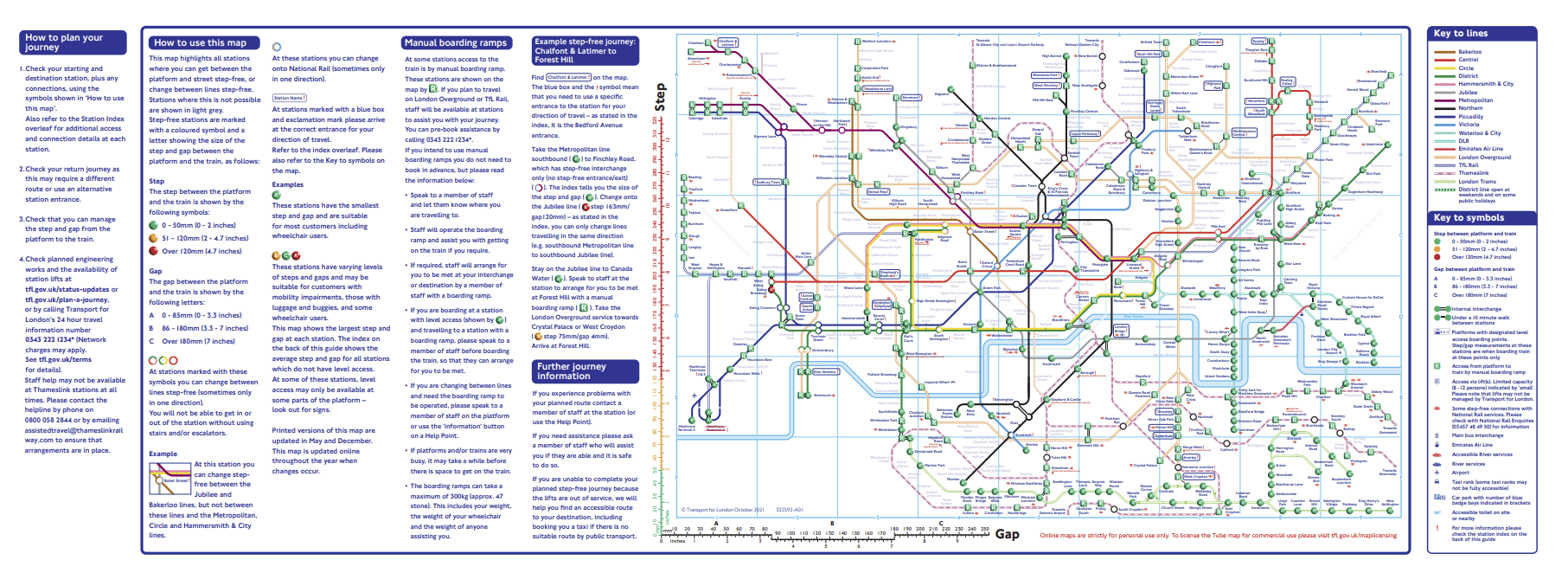Bored of being unable to board? Mapping for Change have been busy creating a Transport Stories Community Map, which will enable you to report the accessibility problems you face when using public transport in and around London.
Issues with the accessibility of public transport can affect all of us. Whether you’re a wheelchair user who cannot ascend a bus ramp, a parent who struggles to carry your child’s buggy up and down stairs, or someone with a big suitcase who can’t overcome the gap between a train and platform, these problems can be embarrassing and upsetting. That’s why Mapping for Change are developing a new Community Map, Transport Stories, which will enable you to make your voice heard and report any accessibility issues you experience.
Earlier this week, a mother with muscular dystrophy was denied access to a bus when the driver asked her to produce a certificate proving her wheelchair weighed less than 300kg. Although the service provider, First Hereford Bus Company, have since launched an investigation, incidents such as this should not be occurring in the first place.
Although Transport for London have a range of policies and procedures in place that are designed to improve accessibility across their network, the reality for many is that navigating London on public transport is fairly impossible.
The tube is particularly problematic. When you glance at the step-free tube map, it appears that 66 of the 270 stations are step-free. However, technically, only around half of these have totally streamlined step-free access from street to platform level. Add to this problems with broken lifts and other temporary obstacles, as well as the ceaseless pulse of rushing commuters, the prospect of navigating in a wheelchair or with a buggy does not seem overly appealing…
‘Sorry, London, but clearly you’ve never had kids. How am I meant to manage a folded buggy, the baby/toddler that would otherwise be restrained inside and accompanying baggage? Not to mention orchestrating such a manoeuvre without causing a giant backlog of commuters behind me?’ (Source: Gluestick Mum)
However, from our ongoing discussions with community groups, it is clear that accessibility problems occur across the whole network. Broken lifts, misleading signage, uneven access ramps, insufficient space, drivers who fail to stop, unaccommodating passengers, enormous platform gaps, unexpected steps; the list of possibilities is endless. What’s important is being able to report problems when they occur, in order to inform service providers and encourage them to facilitate change. Many people have commented that they feel unable to notify TfL about their negative experiences with transport, as there is no clear and simple channel to do so.
That’s why Mapping for Change have been designing a Transport Stories Community Map. This tool will enable people to report specific issues with transport accessibility that they have experienced, however big or small, across the network. This can include physical accessibility problems, such as malfunctioning lifts, platform gaps, and inaccessible ramps. However, it can also be used to report attitudinal problems of transport staff or fellow passengers. At regular intervals, the feedback we receive will be shared with Transport for London, who can take steps to resolve them and improve accessibility. By putting this information on a map, it will be easy to identify problem areas and sites where accessibility is frequently an issue.
Watch this space for further details about the map. It should be going live sometime within the next few weeks!
